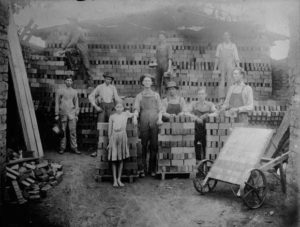Creek’s Mouth. It Only Looks Like A Corrupted Anus
Hacking through brambles to the lighthouse, I stumble upon depressions in the undergrowth like the nests of giant shoreline birds, emphysemic albatrosses, sprung with bottles, spoons, nubs of charred wood; post-apocalyptic archeological sites, where Kingston Man huddled to make it through the night. The pocketed aroma of shit, cruelty and chemicals. I turn around. You can’t be wandering through people’s living rooms in the name of tourism. Not even on tiptoes. A burp of memory from childhood. Train tracks above Blyth, Northumberland, zippered scars knifing through slag heaps behind terraces of houses with outside toilets. Inside a coal-shed, clusters of young boys, teenagers, younger, glassy-eyed opium eaters, their noses and mouths webbed with glue. The faces of devils, sick with sin. Babies. And everywhere, plastic bags like beached jellyfish. These shattering accidents of discovery, pulling back a curtain. I amble home following breadcrumbs dropped forty years ago, blazing a trail to what dogged me then, still dogs me now. The malaise of worship. Along the brown creek, slow as the Congo below Brazzaville, to Eileen’s embezzled eleven o’clock margaritas.

Landscaped for Samuel Coykendall by Downing Vaux (son of Calvert Vaux, who, along with Frederick Law Olmsted, designed Central Park) Kingston Point Park was a railroad baron’s vision of a fantasy fairground where Victorian tourists, ferried from New York City on Thomas Cornell’s celebrated steamboats, would board the Ulster and Delaware Railroad to chuff off to the great Mountain Houses of the Catskills. Originally a swamp, Vaux studded it with amusements, lagoons, a dance hall and, in 1898, the celebrated Oriental Hotel, which – uniquely at the time – allowed drinking. Men would congregate in the bars while women took the children through the arcades. In 1922 the Oriental burned down. The amusement park fell into decline and its buildings were demolished. When Downing Vaux jumped to his death from an upstairs window of the Kingston Y.M.C.A., it was as much metaphor as tragedy. On a Saturday late-afternoon in January, the erstwhile swamp is silent except for the creak and groan of river ice, and the furtive rustle of fellatio.

We walk back along the tracks. In the empty car park two middle-aged men are torturing a remote-controlled car into performing convulsive donuts, its engine a high-frequency buzz saw. The sand on the beach is littered with washed-up Hutton bricks, made in Kingston, a half mile up the flyblown strand. Same as the ones in the Empire State Building and Yankee Stadium. There’s a car by the water, engine running, its hood crumpled. A lady inside, fogged to a dream by cigarette smoke, is gazing at the bridge. Occasionally she winds down the window, heaves out another Price Chopper bag of bread rolls to a waiting legion of seagulls, each the size of a Yorkshire terrier. They rise and fall like a wave with every doughy disgorgement. It’s a scene to be passed by, glimpsed from the corner of an eye. A seagull once assaulted a friend on the steps of Santa Maria della Salute in Venice. It flew in, knocked him down, stole his sandwich. He’d done nothing to provoke it. We break brown ice at the shoreline, then go.
•••

